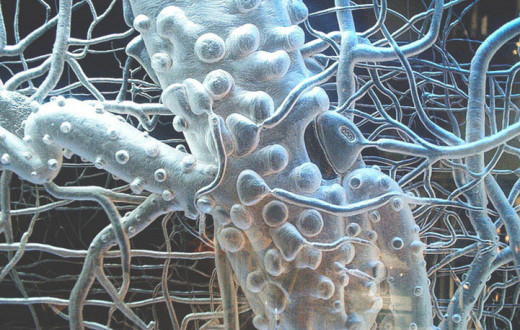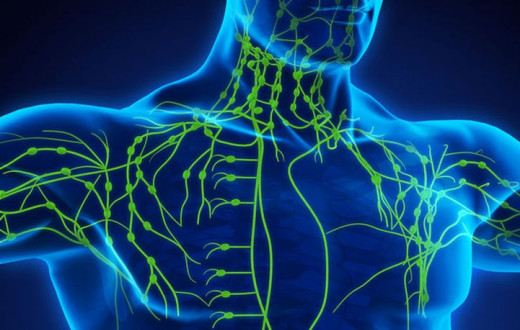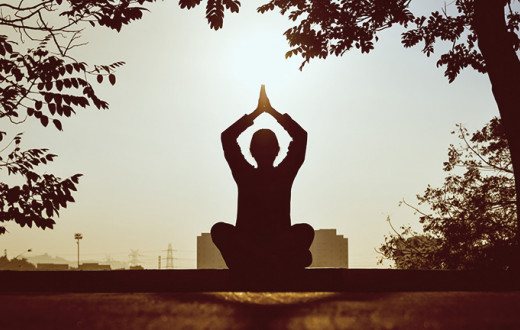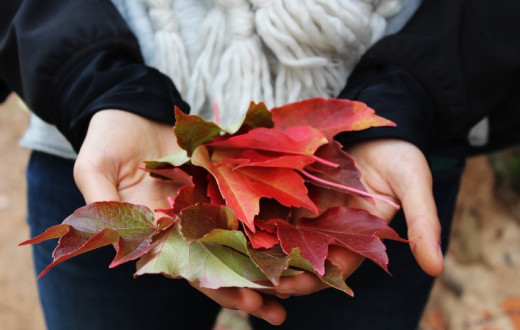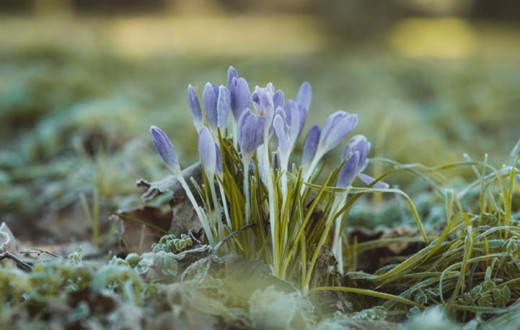By Anuradha Gupta | Posted : September 04, 2020
Are you sneezing? Do you have a runny nose, itchy, watery, irritated eyes, headaches, dark circles, rashes, coughing, or nasal congestion? My son has these symptoms starting because of allergic asthma. He has seasonal allergies and anaphylactic food allergies, which was one of the reasons I started studying Ayurveda in the first place to seek an integrative approach to manage his health.
End of summer and beginning of fall is typically allergy season. Every time we cough or spike a fever it gets worrisome since this is also flu season and the Covid-19 pandemic continues unabated. How can we attend to immunity that may be lowered as we transition to fall?
What is an allergy?
The Asthma and Allergy Foundation of America estimates that over 50 million people in the US have some sort of allergic reaction annually and this is the 6th leading cause of chronic diseases. Allergies can range from annoying to life-threatening and knowing what triggers your symptoms can help with prevention and lifestyle adjustments. An allergy is a condition in which the immune system reacts abnormally to normally harmless substances in the environment due to the hypersensitivity of the immune system.
Allergic diseases include hay fever (allergic rhinitis), atopic dermatitis, contact dermatitis (a rash caused by contact to allergens like cosmetics), allergic asthma (triggered by exposure to certain allergens) and anaphylaxis (a potentially life-threatening allergic reaction). One can be allergic to drugs, certain foods, latex, insects, animals, poison oak, etc. Environmental allergies are caused by dust mites, mold, cockroaches, and pet dander and seasonal allergies by pollen from weeds, trees, or grass.
In modern medicine, allergies are managed with antihistamines, steroids, immunotherapy; bronchodilators for asthma, and a shot of Epinephrine and an ER visit can be life-saving for anaphylaxis. Medicines can have side effects and many people seek natural or integrative approaches to alleviate symptoms or to work in conjunction with modern medicine.
Ayurvedic Approach to Allergies
Allergies occur when there is an intolerance or asatmya in Swastha (health) due to imbalanced doshas, impacted agni (metabolic and digestive fire), presence of ama (environmental and endogenous toxins) impacting Ojas (defined as vitality or health of tissues) and reducing immunity. The approach to managing allergies involves the improvement of immunity or Vyadhikshamatwam, the ability of the body to resist diseases, or recover easier if one falls sick.
Consider a pipe that has bends. When water under high pressure goes through the pipe, any vulnerable bend could break. For different people, the vulnerable organ system varies. When ama accumulates toxins could act like antigens triggering an immune response. The cause could be partly genetic, inappropriate diet, lifestyle, stress, seasonal changes, chronic ailments, and psychological trauma. Ojas depletion makes the immune system vulnerable and hypersensitive to external stimuli; stabilizing and strengthening immunity is the way to provide sustainable outcomes in allergic disorders.
Management of allergies
Allergy management involves:
Avoiding causative factors
Stabilizing the system and restoring balance.
Strengthening immune resistance.
Reintroducing the sensitive items eventually in an integrative approach
Allergies, dosha imbalances, and Ritucharya
Allergies depend upon individual Prakriti (body constitution) and Vikrati (imbalances). They manifest more during seasonal transitions and Ritucharya or seasonal practices minimize allergies. Vata type of allergies are common in the fall. Pitta allergies are common during summer and generally involve inflammation and manifest more on the skin. Kapha allergies are common in springtime and their expression is heavy and congested. The severity of organ systems (srotas or channels) impacted could vary.
Multiple doshas can go out of balance. Ayurvedic protocols are based on an individualized assessment and therapeutic management involving diet, lifestyle changes, herbs and cleansing, and detoxing.
Fall Allergies
The transition from summer to fall leads to a Vata imbalance, with residues of Pitta inflammation. As it starts to get cold, dry and windy, allergies to pollen, dust, pet dander and mold, food intolerances and allergic asthma are common. There is generally more constriction than mucous. Symptoms could include:
Variable appetite
Bloating, cramping, constipation, digestive disturbances
Tinnitus like ringing in the ears
Sneezing, dry cough, runny nose, itchy eyes, post-nasal drip
Headaches, aches, and pains
Insomnia
·Anxiety, loss of focus, and restlessness
Ten Steps to Manage Fall Allergies
Cleanse and rejuvenate – Mild detoxing with a focus on rejuvenation is imperative in managing fall allergies; it relieves immediate symptoms and prevents future recurrences. (Find out more about Fall Ayurvedic cleansing here and how it differs from other cleanses).
Vata-pacifying diet with warm, cooked, easy to digest food, and ensuring proper food combinations. Junk food, cold, dry, rough food eaten at the wrong timings, or skipping meals is apathya (to be avoided). Favor ghee, unctuous food, and the sweet, sour, and salty tastes. Have warming spices like ginger, cumin, turmeric with a pinch of black pepper, tulsi, cinnamon, and nutmeg.
Stay hydrated. Warm water is pathya (favorable). Start the day with one to two glasses of warm water with lemon and local honey and sip warm water or herbal tea throughout the day.
Vata-pacifying lifestyle involves following a routine; timely meals, sleeping on time, a digital detox and getting plenty of rest. Build-in gentle, restorative exercises and stretching.
Dinacharya (daily regimen) to include oil-pulling with sesame oil or arimedadi thailam and abhyanga (self-massage) with sesame oil or any therapeutic oil, daily or as often as you can. Cleanse and protect your nostrils with jal neti (neti pot) and do a pratimarsha (daily) nasya with 1-2 drops of Anu taila, ghee or sesame oil.
Herbal formulations: Favor herbs that are warming but not overly drying. Sri Sri Tattva’s immunity kit with Shakti drops and Amruth would be very beneficial. Some options are Amla, Neem, Turmeric, Haritaki, Vasa, Ashwagandha, Triphala, Yashtimadhu, and Chyawanprash.
Yoga – Restorative, gentle yoga; Asanas that help are spinal twist, fish pose, wind relieving pose, bridge pose, shoulder stand, warrior pose, etc. Pranayamas like ujjayi breathing, three-stage pranayama, bhastrika, kapal bhati, nadi shodhan, and shankh mudra also help with allergy management.
De-stress with breathwork and meditation – Studies have shown that anxiety and stress can trigger seasonal allergy symptoms. Ayurveda considers de-stressing crucial in managing allergies and overall mind-body resilience.
Follow a protocol based on the organ system impacted. Severe allergies and those involving multiple organ systems are complex and often need long term management to enhance immunity.
A. Respiratory allergies involve Vata vitiation coupled with Kapha aggravation. The initial trigger is Vata which causes sneezing, runny nose, nasal congestion, and if not managed properly can lead to sinusitis, chronic cough, bronchitis, and degenerative lung disease.
Prevent exposure to cold (internally with food or externally), minimize head showers (make sure to dry your hair), avoid yogurt, ice creams, cold salads, and exposure to known allergens. Preventative remedies include Nasya with Anu Taila, turmeric milk, local raw honey that can facilitate your body getting used to allergens in the environment. There are targeted formulations for each stage of allergies; here are some home remedies.
Management at different stages
Vata Stage: Acute sneezing and throat irritation. Take ¼ to ½ tsp Ginger paste or powder mixed with hot milk. Or mix 1 tsp of grated Pearl Onion with 1 tsp of lemon juice and raw honey. Take ¼ to ½ tsp of this mixture in intervals of an hour or two.
Kapha Stage: In the congested stage with white thick phlegm, ginger juice with honey works wonders. It can be added to (lukewarm) tea for reducing symptoms. Tulsi, with its anti-inflammatory and anti-allergic properties, is beneficial. Gargling with turmeric and salt or licorice; steam inhalation with turmeric powder, tulsi, and sea salt is recommended.
Pitta Stage: Infective stage with yellow/green phlegm; Ayurvedic management involves an integrative approach, but once an infection is there seek medical help.
B. Skin allergies/Sheetapitta Allergic irritation on the skin with increased inflammation, heat, and congestion; the protocol involves pacifying Kapha, clearing channels, and managing Pitta. Prevention includes diet and lifestyle to balance doshas. Avoid sour or acidic food, minimize oily and fried food, avoid yogurt, tamarind, ice cream, and known allergens. Turmeric and Neem are great herbs for skin sensitivities.
C. Gut Allergies Gut allergies or intolerances can arise because of impacted agni and ama. Single doshas or multiple doshas can be involved. Avoid cold and heavy to digest foods, raw salads and raw smoothies, have easily digestible cooked food, avoid nightshades like bell peppers, tomatoes, eggplants, and potatoes; make sure to sleep on time and manage stress.
Allergies, asthma, cold, flu…or COVID-19
As we go into fall one of the challenges is how to differentiate between Covid-19, allergies, asthma, flu and colds since these ailments could have respiratory symptoms! Refer to the latest comparison between them provided by the Asthma and Allergy Foundation (AAFA) here. USC researchers have found that the progression of Covid-19 symptoms helps distinguish it from the flu and the CDC has provided a detailed comparison between the two. We continue to learn more about Covid-19 including unusual and rare symptoms like new loss of smell or taste and MIS-C in kids. AAFA cautions that information is evolving; self-quarantine if you suspect Covid-19 and get yourself tested. We talked to our kids’ pediatrician about this and he advised that getting a flu shot, managing allergies, asthma, underlying medical conditions and (if you fall sick) getting in touch with your doctor for a differential diagnosis and treatment is imperative.
Take a Breath!
A major factor impacting allergies and overall health is stress. It’s no wonder we are worried as we go into fall, with the economy and schools opening up and concerns about jobs and staying well in the midst of the pandemic. California and other states are battling forest fires as I write this. The beginning of fall is literally called the forest fire season in Ayurveda with Vata-Pitta imbalance in the environment and in our mind-body complex leading to a tendency to burnout. Slow down, fall back, and focus on self-care! Stay safe, mask up, meditate, maintain good physical and mental hygiene with social connections, and social distancing where possible!
Take a breath and reduce your stress; join us for a free breath and meditation workshop, Beyond Breath!
With inputs from talks by Vaidya Vishnu Keerthi and Vaidya Jayarajan Kodikannath.
Anuradha Gupta is an Engineer, MBA, writer and Ayurvedic Wellness Practitioner. She has a corporate background and volunteers for Art of Living and other nonprofits. You can find her on Facebook or LinkedIn.
Disclaimer: This content on the Art of Living Blog is not intended to be a substitute for professional medical advice, diagnosis, or treatment. Always seek the advice of your physician or other qualified health providers with any questions you may have regarding a medical condition, Any links to third-party websites are provided as a convenience only and the Art of Living Blog is not responsible for their content.



